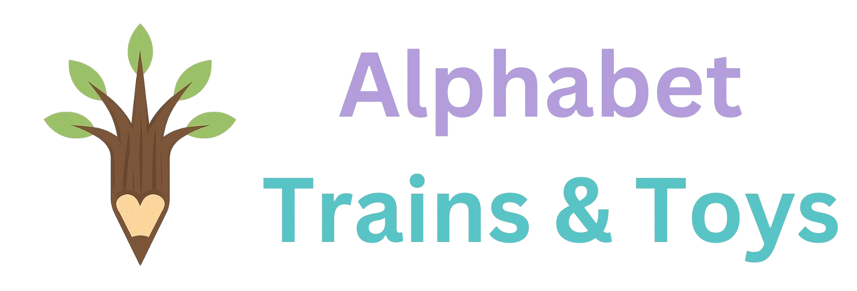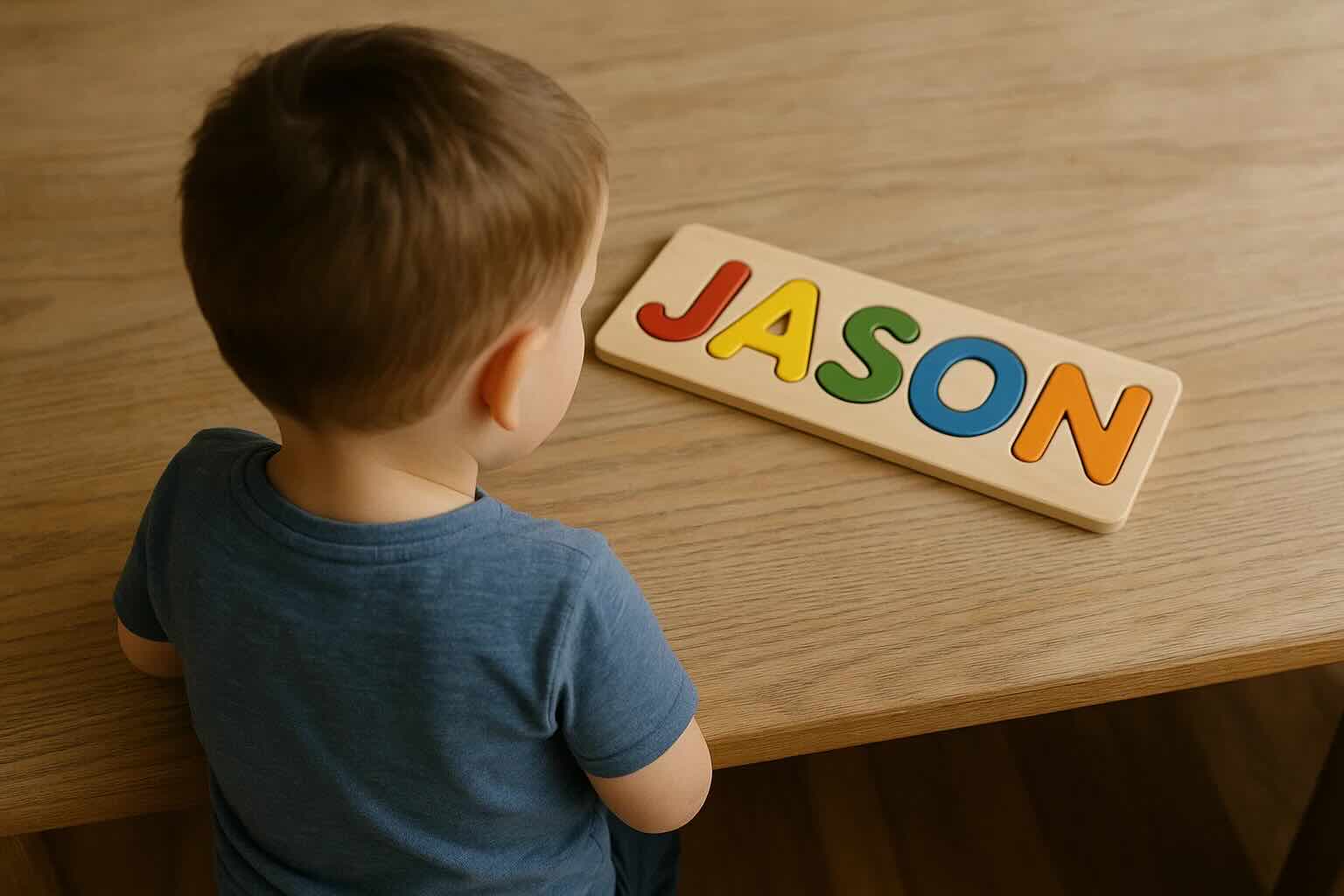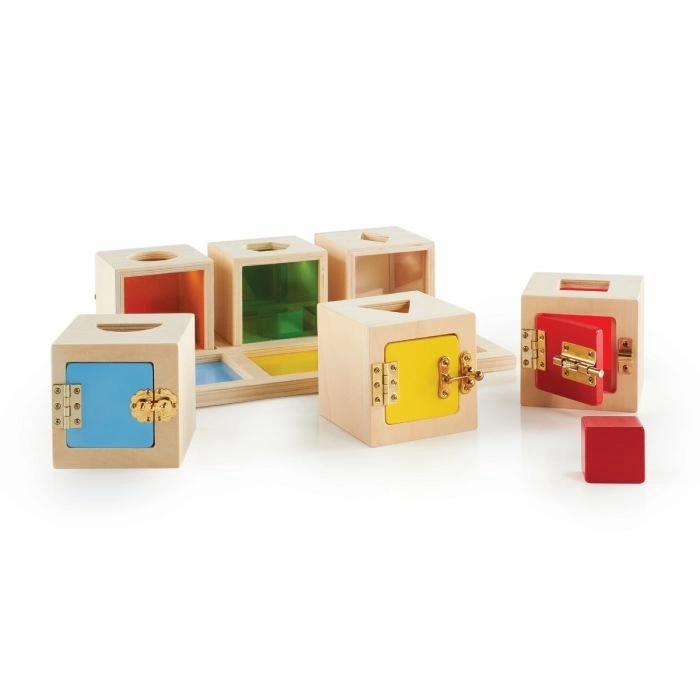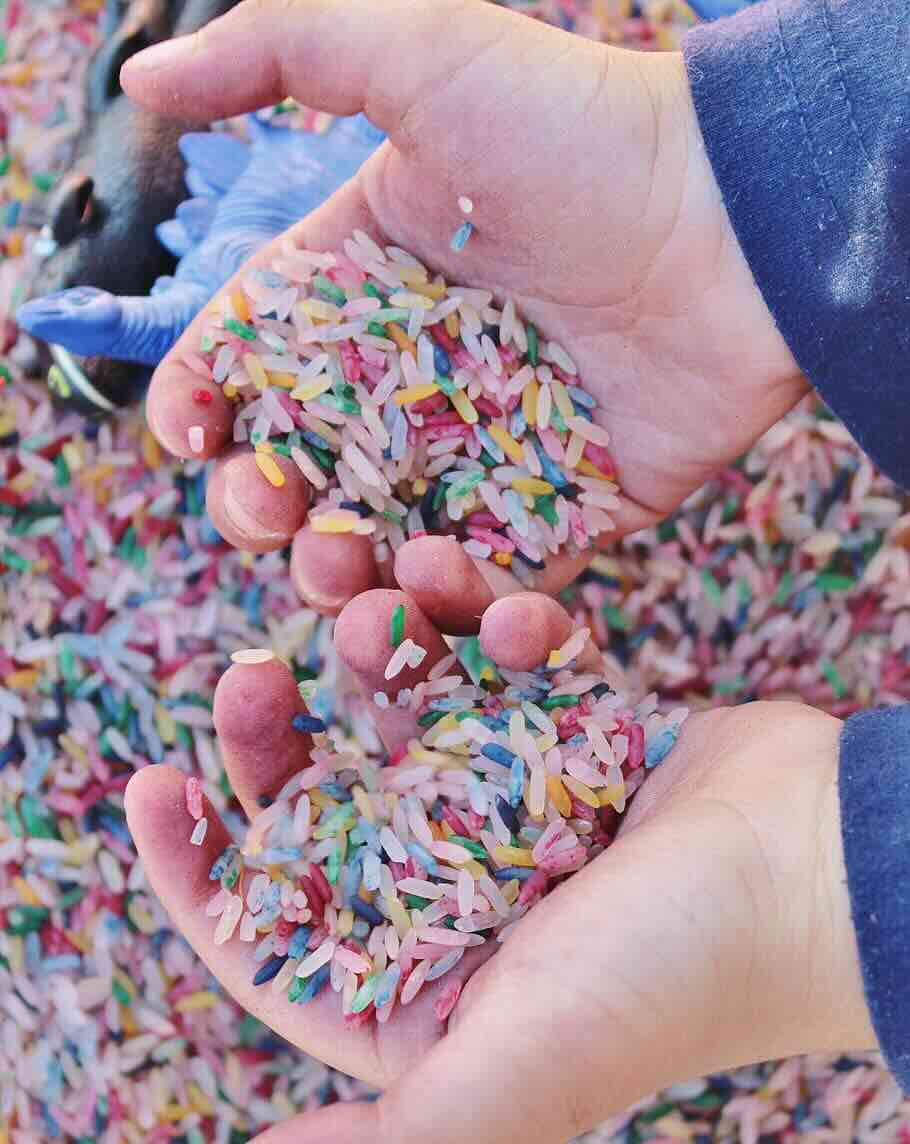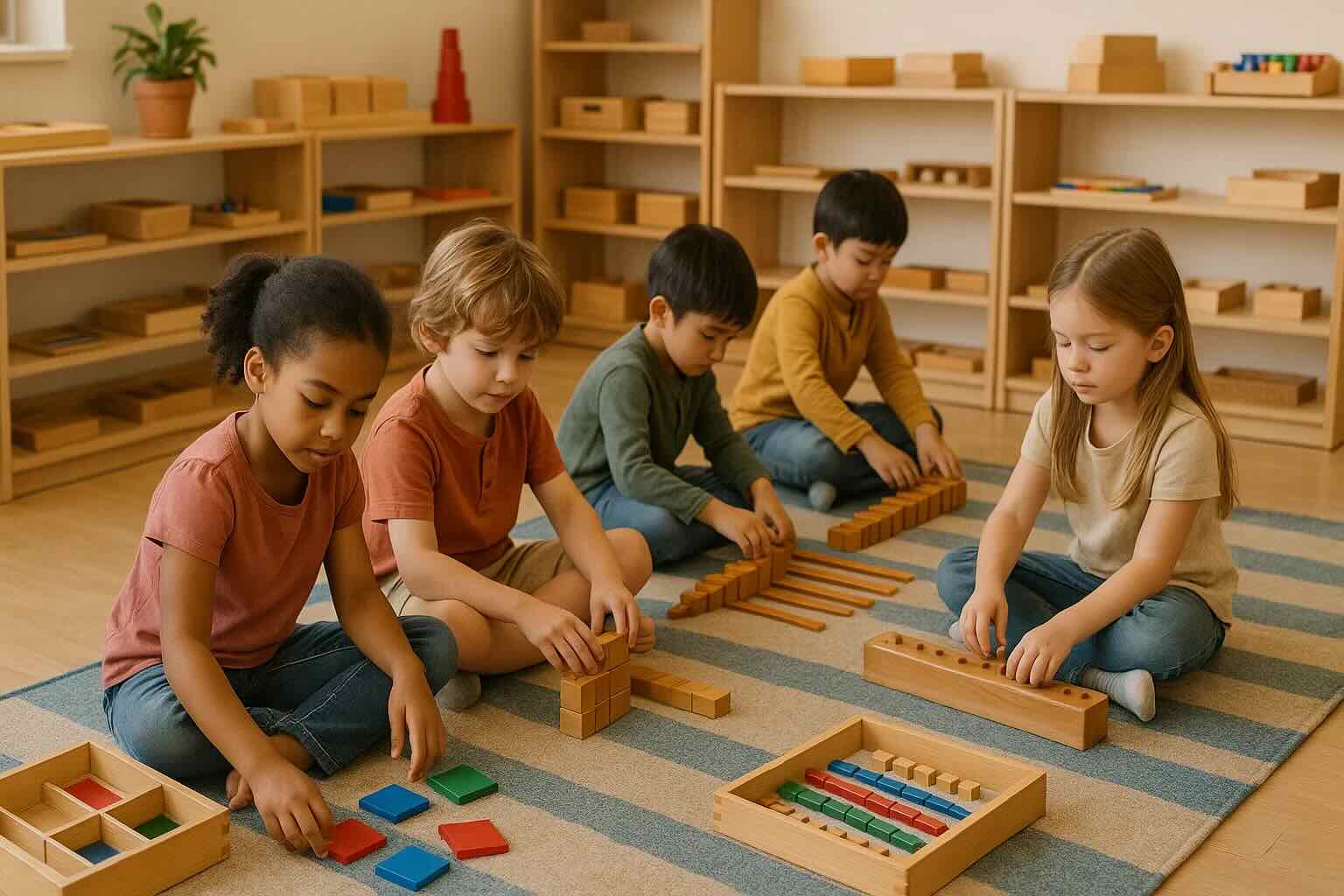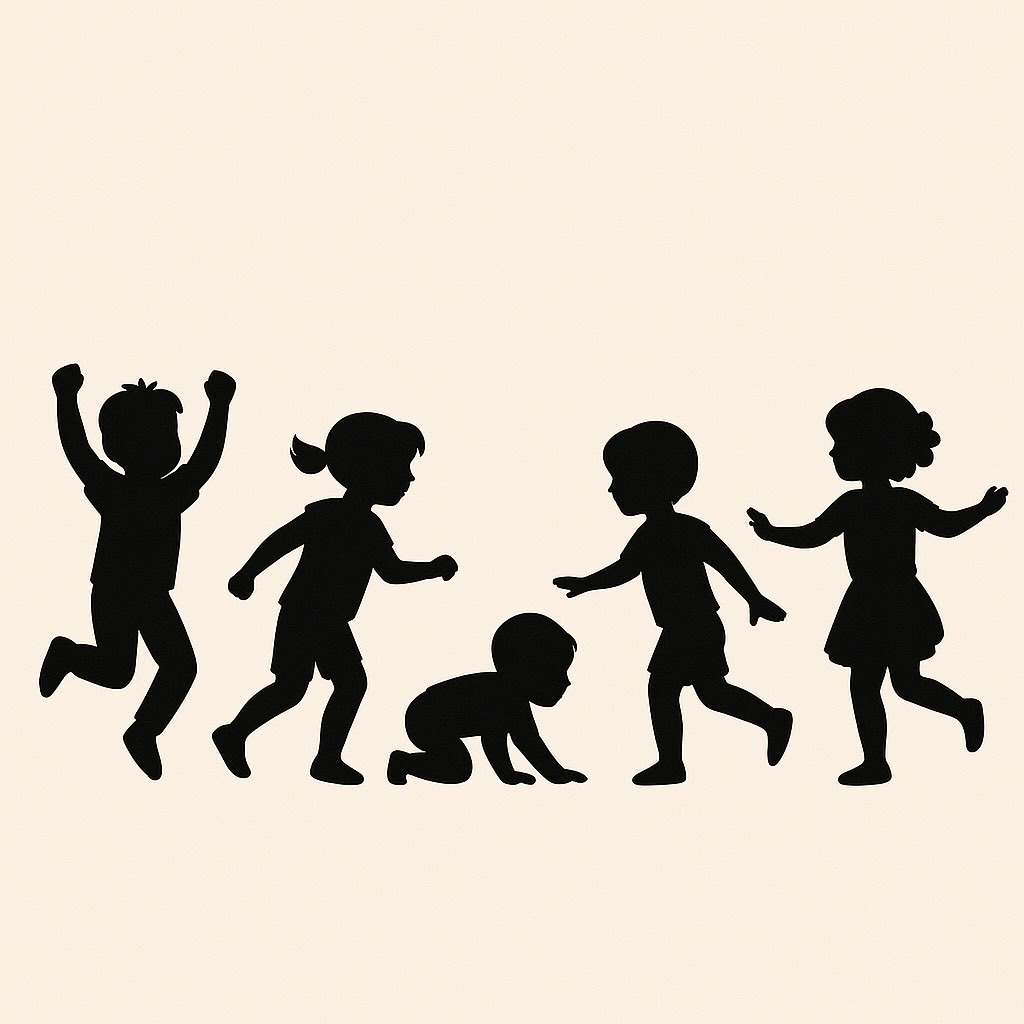TL;DR: Children who start with their name learn letters faster because they're emotionally invested. Name letters become the 'Gold Standard' that kids use to recognize all other letters. Start when kids show interest in print, use their name everywhere, then progress to tracing and writing. Research shows this creates lasting reading advantages.
Why Your Child’s Name Is the Key to Early Literacy
One of the first words a child hears and recognizes is their own name. That name becomes a powerful teaching tool — a natural and deeply personal way to introduce letters and sounds.
As a Montessori educator, I’ve seen it happen again and again: a child struggling with letter recognition suddenly lights up when they spot “their” letter in a word. When preschoolers see their name in a book, on a toy, or labeled on something familiar, they instantly connect. They feel ownership, interest, and pride. Name trains and wooden name puzzles combine literacy and play in a way that centers the child’s identity. This is why < href="/blog/post/montessori-personalized-toys-guide">personalized educational toys are so effective — they make learning deeply meaningful by connecting to a child's sense of self.
💡 Montessori Tip: Use your child’s name as the “anchor word” when introducing letters. Start with the first letter of their name — it has the strongest emotional pull and will likely be remembered first.
How I Discovered This in My Classroom
I’ll never forget the moment a three-year-old named Sofia pointed to the S in the word “Sun” — a word we had just written together under her drawing — and proudly said, “That’s my letter!”
Up to that point, she hadn’t shown much interest in letters. But something shifted. That S meant something. It was hers.
It was in moments like these that I began to realize something backed by neuroscience: self-referential information — like a child’s own name — activates multiple areas of the brain at once. It boosts memory, attention, and emotional engagement1. For young children, it’s the perfect doorway into reading.
What Kids Learn from Their Name
Let’s take the name EMMA. When a child learns to read and write E-M-M-A, she’s internalizing more than just letters:
- Letters have distinct shapes and sounds
- Letter order matters and creates meaning
- Some letters can repeat (two M’s)
- Written symbols correspond to spoken language
All of this happens faster when the learning is tied to something meaningful — and nothing is more meaningful to a child than their own name.
🧠 Did You Know? Neuroscientists have found that people remember self-referential words (like their own name) better than random words — because they activate both memory and emotional processing centers in the brain.
Why Name-Based Learning Works
Stronger Letter Recognition
Children often treat the letters in their name as their reference point — their 'Gold Standard.' Studies by researcher Rebecca Treiman show that children tend to recognize letters from their own names far more easily, especially the first letter2.
Example: Marcus knows M from his name. So when he sees M in words like “milk,” “mom,” or “more,” he lights up. Each time, that recognition strengthens his understanding of letters in real-life settings.
🔤 Try This: Create a “Name Letter Hunt” at home. Write your child’s name on paper and search for those letters in books, food packaging, or signs. Turn it into a game — learning through play is powerful.
Boosts Sound Awareness
When I was a child, I remember feeling that alphabet lessons were oddly meaningless — a parade of random symbols with no emotional connection. Many kids feel that way. But when they learn letters from their own name, everything changes. It matters.
Tools like custom books and coloring books featuring their name keep learning fun and personal while reinforcing phonics and recognition.
Research shows that children often use their name as a foundation to decode and learn other words2. It’s not just a starting point — it becomes a springboard.
Encourages Writing Development
Once a child can identify their name, writing it becomes a meaningful goal. Tracing and forming the letters in their name feels exciting — not like a chore. It becomes a way to express themselves.
Studies show that children demonstrate better writing accuracy for letters in their names, particularly the first letter2. This personal connection motivates them to keep going.
✍️ Pro Tip: Use tactile materials like sandpaper letters, wooden puzzles, or finger tracing trays to help your child write the letters in their name. Multi-sensory input strengthens letter formation and memory.
Easy Ways to Reinforce at Home
You don’t need a formal curriculum — just bring your child’s name into everyday life. Label their backpack, water bottle, books, and toys. Name stools and personalized baby blankets make even daily routines into learning opportunities.
Say their name often, spell it out, trace it with them, and eventually help them write it. A multisensory approach — seeing, hearing, touching, and writing — activates more areas of the brain and builds long-term retention4.
🛠️ Quick Activity: Label everyday items — lunchboxes, drawers, books — with your child’s name. Let them point it out and say the letters aloud. This repetition in real-world settings builds literacy effortlessly.
From Recognition to Reading Confidence
I’ve seen the long-term results — in my own children, in classrooms, and in stories shared by families. Research backs this up: knowing the letters in one’s name by kindergarten is one of the strongest predictors of later reading success4.
When you start with a child’s name, you’re not just helping them recognize letters — you’re giving them a confident, joyful entry point into literacy.
📚 Evidence-Based Insight: The National Reading Panel found that early letter name knowledge is one of the most reliable predictors of later reading success. That’s why name-based learning isn’t just cute — it’s strategic.
Will This Work for Bilingual Learners?
Absolutely. The cognitive benefits of name-based learning — memory, emotional connection, attention — aren’t language-specific. Whether your child speaks English, Spanish, Farsi, or Mandarin at home, their brain still prioritizes personally meaningful input1.
Where to Begin
Start simple. Write your child’s name. Say it. Trace it. Label with it. Celebrate it. The first word your child ever reads will likely be their own name — and that moment will be unforgettable.
It’s not just a learning milestone. It’s the beginning of their story.
References
- Sui, J., & Humphreys, G. W. (2015). The integrative self: How self-reference integrates perception and memory. Trends in Cognitive Sciences, 19(12), 719–728.
- Treiman, R., & Rodriguez, K. (1999). Young children use letter names in learning to read words. Psychological Science, 10(4), 334–338.
- Ehri, L. C. (2005). Learning to read words: Theory, findings, and issues. Scientific Studies of Reading, 9(2), 167–188.
- National Reading Panel. (2000). Teaching children to read: An evidence-based assessment of the scientific research literature on reading and its implications for reading instruction. National Institute of Child Health and Human Development.
